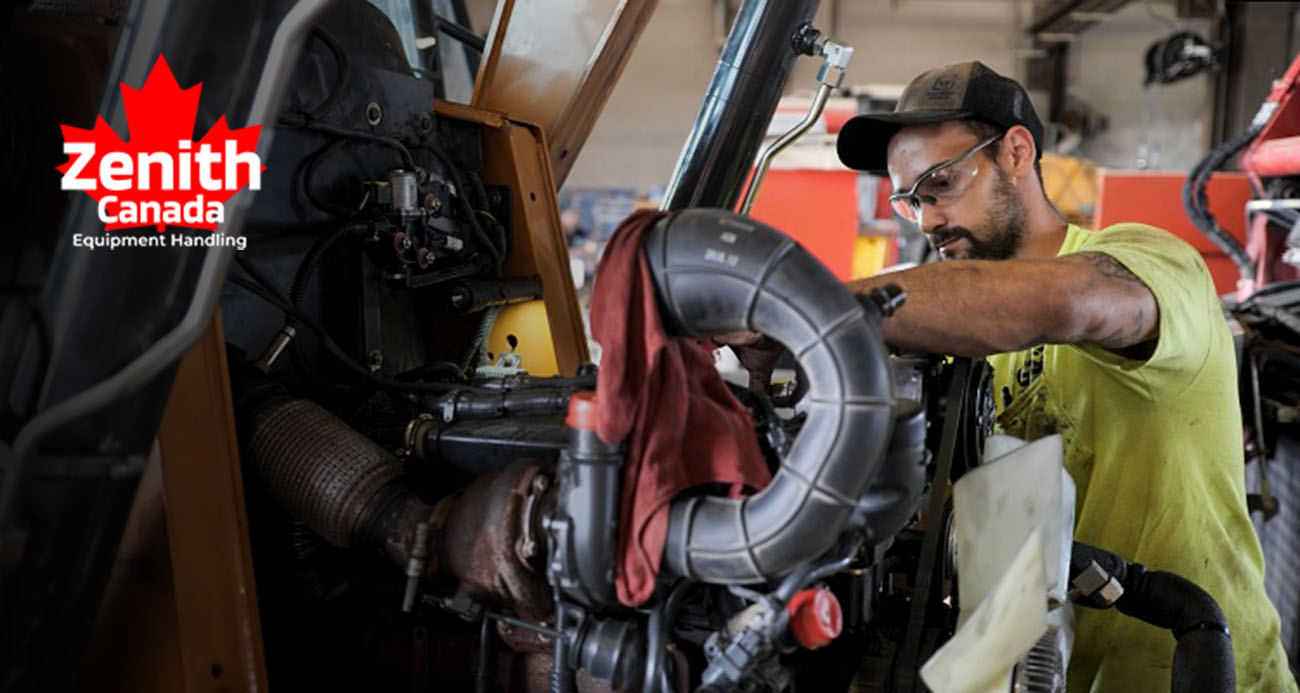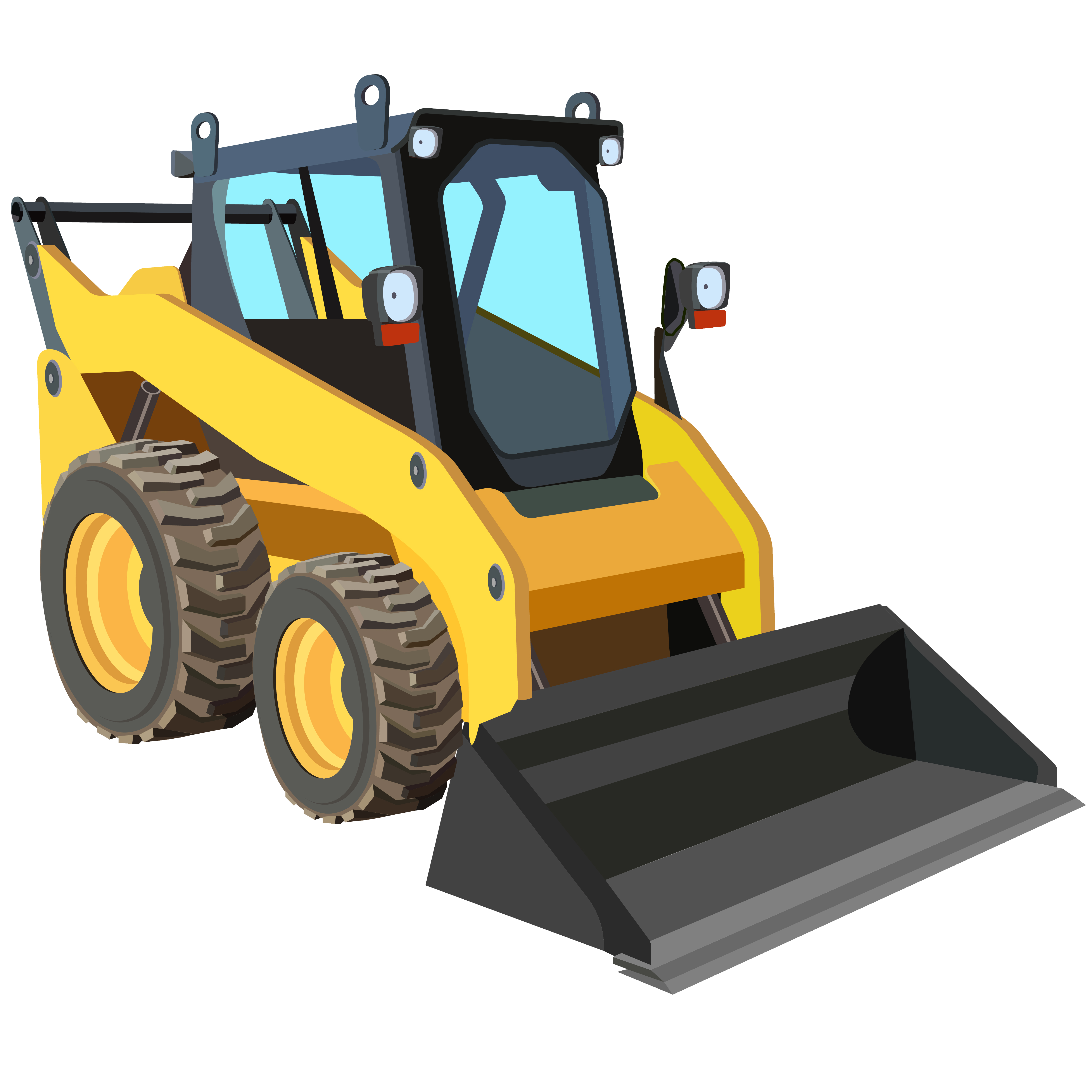Call or WhatsApp today for a free quote : +1 (416) 660-5054

Essential Maintenance Tips For Your Used Construction Equipment in Mississauga
Maintenance of construction equipment can be an affordable way to extend its lifespan and resale or trade-in value, ensure safer, more productive work, and reduce unexpected expenses.
Checklists provide an ideal method for leading team members through inspection and maintenance steps.
This blog will discuss essential maintenance tips for used construction equipment in Mississauga. Zenith Canada widely uses the essential tips to ensure the wellness of used equipment.
Check the Tires
Construction equipment’s tires are integral to providing power and performance on site. They must remain clean to prevent wear from dirt, rocks, and other debris.
Additionally, tires must be regularly inspected to identify any hidden damage that could be hidden beneath dirt and mud. Look out for signs of irregular tread wear, flat spots, or punctures, which could expose plies, cause air leaks, or lead to blowouts.
Poorly maintained equipment often develops compound failures that cost more than expected in repair costs and lost productivity. Scheduling regular inspections can detect minor issues before they turn into major repairs.
Check the Oil
No matter the training employees receive, equipment breakdowns remain unpredictable but also preventable. Routine maintenance can reduce costs associated with construction equipment, extend its lifespan, and increase resale and trade-in values.
Oil analysis can be one of the simplest and most cost-effective strategies for preventing unexpected breakdowns of used construction equipment in Mississauga. By identifying contaminants and worn areas within oil samples, technicians can make timely repairs as necessary. This evaluation process can also become simpler by creating a checklist for each piece of equipment being evaluated.
Check the Coolant
Heavy equipment operators spend all day long with their machines, often developing an intuitive understanding of them that enables them to recognize potential issues before they escalate into major ones.
Thermally-induced failure is an increasingly prevalent risk in construction machinery due to extreme temperatures that can push equipment beyond its capabilities. Working within its limitations and avoiding extreme conditions is one way of minimizing stress failures of this nature.
Checking coolant levels regularly is vital to keeping machines operating optimally.
Check the Battery
An efficient battery is crucial to running used construction equipment in Mississauga efficiently. By charging it before storage, damage can be avoided, and your machine can resume operating smoothly when ready.
Maintenance should always continue when machinery is idle; regular checks can detect problems before they become costly repairs or liability lawsuits. By adhering to these tips, your equipment should outlive its expected lifespan and give the highest return on your investment, according to specific guidelines and schedules related to this equipment manufacturer.
Check the Brakes
Heavy machinery is designed to withstand difficult environments, but even the toughest machines need regular inspections to keep running smoothly. Regular checks can help ensure equipment runs as intended and operate at maximum capacity.
Checklist items should include :
- brake conditions (pad wear, caliper pistons, and sliding pins)
- rotor conditions (burn marks or corrosion)
- the condition of hoses and tubing (cracks, chafing, kinks, proper positioning, and smooth connections)
- fluid levels in equipment tanks at their recommended levels and any essential observations such as backup alarms or lights.
Check the Undercarriage
While abrasion, corrosion, and fatigue are three of the primary sources of mechanically induced failure (when parts break or fail), these issues can be avoided by adjusting track tension and lubricating moving components regularly. Furthermore, using a power washer regularly to clear away dirt buildup provides another effective preventative measure.
Another fundamental way of mitigating expenses is to prevent breakdowns and unnecessary repairs by having your equipment operators conduct regular inspections. This also serves as a solution for unavailability issues.
Check the Electrical System
An effective piece of equipment requires its electrical system to be in good working order for it to function efficiently. Defective wiring may pose safety issues and cause power outages; regular inspections can detect these problems and address them before they become dangerous or costly breakdowns.
No one knows your equipment better than its original manufacturer. Adherence to their recommended maintenance guidelines can significantly extend its life and ensure optimal functioning.
Check the Hydraulic System
Hydraulic systems on equipment can operate at extremely high temperatures and pressures, leading to severe injuries from hydraulic fluid spraying during maintenance or from failing to depressurize properly.
Hydraulic systems should be carefully monitored on an ongoing basis for leaks or signs of wear or deterioration since seals and gaskets are exposed to high temperature, high pressure, chemical contaminants, and constant wear-and-tear.
An initial visual inspection should serve as the starting point, while further evaluation with a flashlight and camera can identify hidden problems. Furthermore, having your hydraulic fluid tested is recommended.
Check the Transmission
If a used construction machine shifts gears suddenly or unpredictably, this should be taken as an early indication of transmission issues that could prove costly and time-consuming to resolve.
Checklists should also include battery inspections that assess battery age, acid ratio, and terminal condition. Fuel, oil, or hydraulic fluid leakage should also be closely observed, as it can slack in belts, tools, damaged attachment arms, and ruptured hoses, causing severe issues.
Check the Fuel Tank
An inspection checklist for construction equipment should include fuel tank inspection. Damage or insufficient levels can affect how well a machine functions or even lead to costly mechanical breakdown.
Checklists should also include inspecting electrical lines for exposed wires or signs of corrosion, inspecting hydraulic lines for signs of leaks, and checking work tools to ensure they remain functional.
Finalizing a checklist means inspecting the cab to ensure all seatbelts are correctly installed and functioning according to manufacturer guidelines.
Conclusion
By following these essential maintenance tips, you can extend the lifespan of your used construction equipment in Mississauga, minimize downtime, and maximize your return on investment. Remember, preventative maintenance is critical!
For Zenith Canada customers, we offer a wide range of maintenance services and genuine parts to keep your equipment running like new. Contact your local Zenith Canada branch today to schedule a maintenance checkup or browse our selection of parts. Let our expert technicians help you ensure your used equipment in Mississauga continues to be a reliable asset on the job site!

